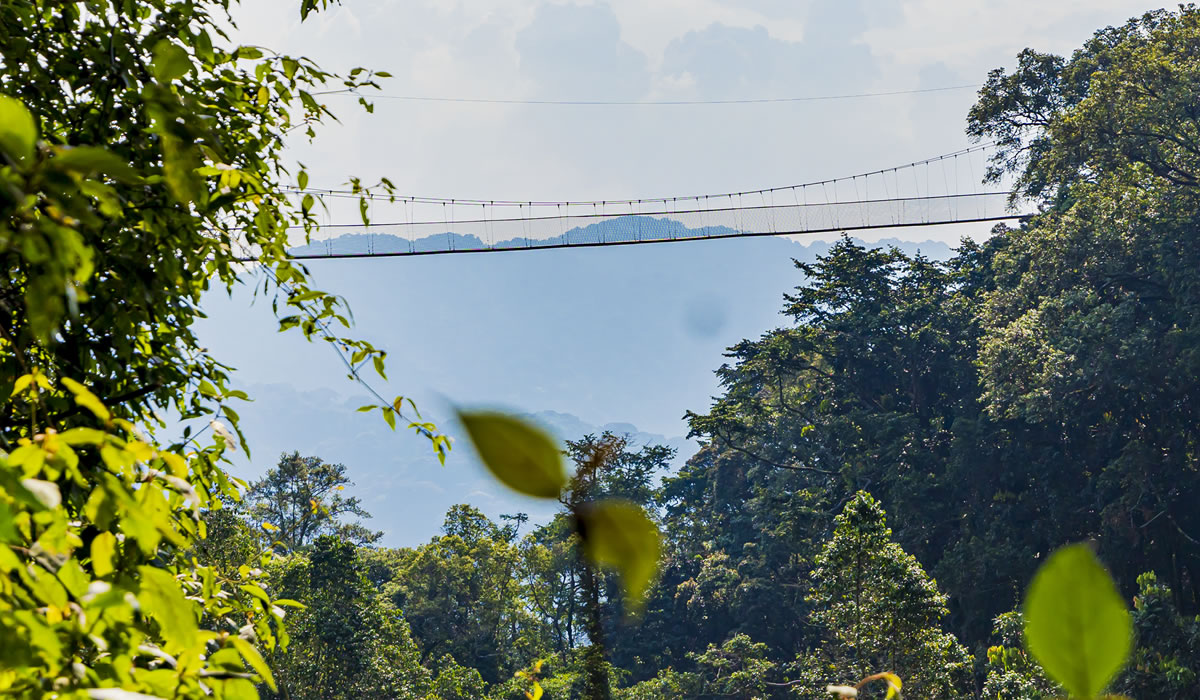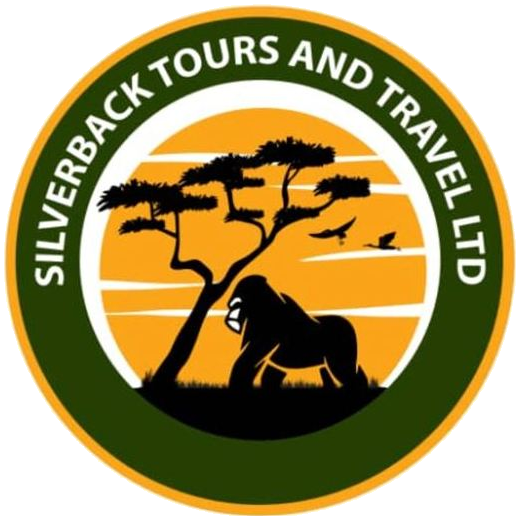Nyungwe Forest National Park, located in the southwestern region of Rwanda, is one of Africa’s oldest and most biodiverse rainforests. Stretching over 1,019 square kilometers, this ancient montane rainforest lies along the Albertine Rift and forms part of the Congo-Nile watershed. Established as a national park in 2004, Nyungwe is a conservation gem and a vital ecological hotspot, home to a dazzling array of flora and fauna, much of which is endemic to the region. For travelers seeking a deeper connection with nature, Nyungwe offers an immersive experience of lush forest landscapes, rare wildlife encounters, and eco-friendly adventure.

Things to See in Nyungwe Forest
Nyungwe is famous for its rich biodiversity, hosting more than 1,000 plant species, over 300 bird species, 85 mammal species, and 13 species of primates. The park is particularly known for its large population of primates, including troops of chimpanzees, L’Hoest’s monkeys, colobus monkeys, grey-cheeked mangabeys, and the golden monkeys that are endemic to the Albertine Rift.
One of the park’s standout attractions is the Angolan colobus monkey, often seen in large troops of up to 400 individuals an impressive sight found in few places worldwide. Nyungwe also offers incredible birdwatching opportunities, being home to some of Africa’s rarest and most beautiful birds, such as the Great Blue Turaco, Ruwenzori turaco, grauer’s swamp warbler, and red-collared mountain babbler.
Botanically, Nyungwe is a paradise. The forest is layered with orchids, giant ferns, mahoganies, and ancient hardwood trees. The dense vegetation, combined with the constant mist and rolling hills, gives the park a mystical, almost primeval feel. Adding to this ambiance are dozens of small waterfalls and mountain streams that crisscross the park, contributing to its serene beauty and providing habitat for amphibians and aquatic life.
Activities in Nyungwe Forest National Park
Nyungwe is a place where adventure meets conservation, offering a variety of eco-tourism activities that appeal to nature lovers, adventure seekers, and wildlife enthusiasts.
- Chimpanzee Tracking
One of the most popular activities in Nyungwe is chimpanzee trekking. The park is home to around 500 chimpanzees, and two habituated groups are accessible to tourists. The treks typically begin early in the morning and are guided by experienced rangers who help track the primates through the forest. Observing chimpanzees in their natural habitat, watching them swing through the trees, communicate with each other, or forage for food is a profoundly moving experience and often the highlight of a visit. - Canopy Walk
The Nyungwe Canopy Walkway is one of the park’s most iconic experiences. Suspended 50 meters above the forest floor and extending 160 meters across a deep valley, this metal suspension bridge offers breathtaking views of the forest canopy, distant hills, and the diverse birdlife. The canopy walk is part of a guided hike that typically lasts two to three hours and is suitable for most fitness levels. It’s one of the few canopy walkways in East Africa and provides a unique perspective of the forest’s upper layers. - Hiking and Nature Walks
With over 130 kilometers of well-maintained hiking trails, Nyungwe is a hiker’s haven. Trails vary in difficulty and length, from short scenic walks to full-day treks. Some of the most popular trails include:
- Igishigishigi Trail – an easy 2.1 km loop that includes the canopy walkway.
- Imbaraga Trail – a more challenging 10 km route with beautiful waterfall views.
- Uwinka Trail – a moderate 17.8 km trek offering panoramic views of the forest and birdlife.
Each trail provides different insights into the park’s ecosystems, and guided hikes can include educational commentary about the local flora, fauna, and conservation efforts.
- Birdwatching
Nyungwe is a top destination for birdwatchers, offering the chance to see numerous Albertine Rift endemics. The dense forest and high-altitude ridges provide the perfect habitat for elusive and brightly colored bird species. Birdwatching tours are available with experienced guides who can help visitors identify the region’s rarities and understand their ecological importance. - Cultural Experiences
In addition to natural attractions, visitors can engage in cultural encounters in the communities surrounding the park. These may include traditional dance performances, tea plantation tours (especially near Gisakura), or visits to community cooperatives. These experiences help promote sustainable tourism and provide insight into Rwandan culture and daily life.
Best Time to Visit
Nyungwe Forest National Park is a year-round destination, thanks to its equatorial climate, but some months are more favorable than others depending on the activity of interest. The dry seasons, from June to September and mid-December to February, are the best times for trekking and hiking. Trails are less slippery, and visibility is generally better, making wildlife sightings more likely.
However, the forest remains lush throughout the year, and the rainy seasons (March to May and October to early December) bring their own charm—especially for birdwatchers, as this is when many species are breeding. Rain can make trekking more challenging, but it also enhances the forest’s vibrant green beauty and increases chances of encountering mushrooms, frogs, and other moisture-loving species.
How to Get There
Nyungwe Forest National Park is accessible by road from Kigali, the capital of Rwanda. The journey covers approximately 220 kilometers and takes 5 to 6 hours by car, depending on the route and road conditions. The most common route is via Huye (formerly Butare), which also provides an opportunity to visit the Ethnographic Museum, one of the finest cultural museums in East Africa.
Travelers can opt for self-driving or book a guided tour with one of Rwanda’s many reputable safari operators. The roads are generally in good condition, and the scenery en route is stunning, winding through lush hills, tea plantations, and rural landscapes.
For those preferring faster travel, helicopter transfers are available through charter services like Akagera Aviation, offering aerial views of Rwanda’s rolling hills and delivering guests directly to Nyungwe.
Once in the park, the main visitor center is at Uwinka, where most activities are organized. Accommodation options are conveniently located near park entrances, particularly around Gisakura, which serves as a popular base for tourists.
Accommodation Options
Nyungwe offers a range of accommodations catering to different budgets. At the luxury end, the One&Only Nyungwe House stands out as a world-class eco-resort nestled in a working tea plantation. It provides high-end amenities, guided experiences, and immersive wellness programs.
Mid-range options include Nyungwe Top View Hill Hotel, offering beautiful views and comfortable facilities. Budget travelers can find guesthouses and small lodges in nearby towns like Gisakura, such as Gisakura Guesthouse, which provides simple, clean rooms and easy access to park activities.
Camping is also available in designated areas for those seeking a closer connection with nature.
Nyungwe Forest National Park is a pristine ecological wonder and a cornerstone of Rwanda’s conservation landscape. With its rich biodiversity, stunning scenery, and engaging activities, it offers a unique and serene alternative to traditional African safaris. Whether trekking with chimpanzees, walking high above the treetops, or simply soaking in the peaceful atmosphere of ancient forests, Nyungwe invites visitors into a world of discovery and connection with the natural world. For anyone traveling to Rwanda, it is a destination not to be missed, a place where the heart of Africa still beats in its most natural rhythm.

